The Almanzora Valley
Almeria - Andalucia - Southern Spain
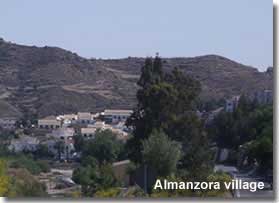
Valle de Almanzora
An open valley dotted by whitewashed pueblos in a stunning countryside of olive groves and fruit orchards. Situated between and incorporating the dramatic mountain ranges of the Sierra de los Filabres in the south and the Sierra de las Estancias to the north, the Valle de Almanzora follows a natural pass, and manmade route (the A-334), along the trail of the Almanzora river from Alcontar, close to the plains of Granada in the west, to the eastern villages of Arboleas and Zurgena.
The Valle de Almanzora region, contrary to the assumption that its name suggests, does include much of the Filabres and Estancias mountain ranges and most of the mountainside villages within its boundaries, the limits of which are detailed in the map below.
ALMANZORA MAP


View Map for the location of the Valle de Almanzora
Choose the Almanzora for rural property in Almeria
For rural property in Spain the province of Almeria in Andalucia would be hard to beat...
The Almanzora region offers an exceptional inland destination in the valleys and mountains of Almeria with a prime selection of rural properties... for holidays... for ever...
Please enjoy this guide to the Almanzora, at the end of the page follow the links to other destinations and rural locations in Almeria or take advantage of the property search to find your ideal place in the sun.
Quick links - Almanzora:
- The Purchena Albazaba ruins
- Mining and Minerals
- Gastronomy
- Arts, Crafts and Museums - including the Pedro Gilabert museum and Casa Ibanez art gallery
- In to the mountains La Silveria recreation area
- Property in the Almanzora
Exploring the Almanzora
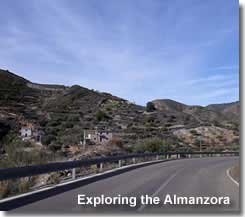 Characterised by its cultural ancestry and its environmental background, the Almanzora has a wealth of natural resources, which, throughout the long history of the region, have shaped its destiny and its people.
Characterised by its cultural ancestry and its environmental background, the Almanzora has a wealth of natural resources, which, throughout the long history of the region, have shaped its destiny and its people.
The countryside offers the visitor recreational interests such as walking, cycling and horse riding in a landscape of unique natural features interspersed with traditional villages and historical sites and monuments. Local arts and craft works are an added temptation, as is the sampling of the local cuisine.
There are just so many options for day trips and excursions in the Almanzora its hard to know where to begin, I have undertaken several explorations of the region and have made many interesting discoveries, though I feel that I have perhaps only 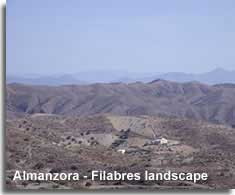 scratched the surface of this fascinating destination. For me, more visits are a must do.
scratched the surface of this fascinating destination. For me, more visits are a must do.
As mentioned the Almanzora region amalgamates with the mountains of the Sierra de los Filabres and the Sierra de las Estancias and some of the Almanzora destinations are detailed in those particular pages.
Links to the Sierra de los Filabres and the Sierra de las Estancias are provided at the end of the page.
Below is a list of useful Spanish words that are often referred to in these pages and will be encountered while exploring the Almanzora.
Cultural Heritage
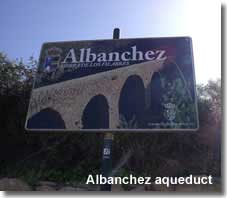 The mixed heritage of the Almanzora stems from the multitude of civilisations which have inhabited the region, the first human traces go as far back as the early part of the Stone Age. The rich land, of strategic geographical positioning, has always attracted interest, not excluding the ancient cultures of the Phoenicians, Carthaginians and Romans.
The mixed heritage of the Almanzora stems from the multitude of civilisations which have inhabited the region, the first human traces go as far back as the early part of the Stone Age. The rich land, of strategic geographical positioning, has always attracted interest, not excluding the ancient cultures of the Phoenicians, Carthaginians and Romans.
The Los Arcos Aqueduct, on the outskirts of Albanchez village, 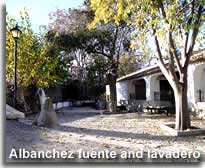 is said to have been constructed in Romans times, for centuries it served to transport water from the Barranco del Abelfarico ravine to supply the town. Located along the Rambla del Pozo river bed, it is signposted from the village by the side of the Fuente de los Caños and the Lavadero, the fountain and public laundry. The fountain,
is said to have been constructed in Romans times, for centuries it served to transport water from the Barranco del Abelfarico ravine to supply the town. Located along the Rambla del Pozo river bed, it is signposted from the village by the side of the Fuente de los Caños and the Lavadero, the fountain and public laundry. The fountain, 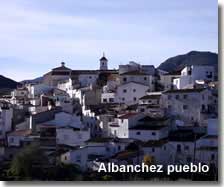 which dates back to the 18th century, was reconstructed in 1880, and the laundry, which was originally built in 1950, has since been restored as a site of cultural interest.
which dates back to the 18th century, was reconstructed in 1880, and the laundry, which was originally built in 1950, has since been restored as a site of cultural interest.
...also in Albanchez...
The main centre of the village is clustered on a hillside around its parish church, Iglesia Parroquial de la Encarnacion, and the town hall square, from the pueblo there are marvellous views over the surrounding countryside.
The Ermita San Roque, named after the patron of the village, is situated on the lower main road, the chapel dates back to the 15th century, it was restored in 1910, and in 1990 its exterior was renovated, the base of which is decorated with marble extracted from the Almanzora region.
The Cerro del Castillo, the hill of the castle, which today is recognised by the communications antenna on the peak, holds historical relevance in Albanchez as the site of an ancient Moorish fortress, though there is very little to see now except the remains of the foundations.
It is from the Nazari era, when Southern Spain was dominated by the Arab Kingdom, that the greatest cultural and architectural impact has been made on the Almanzora. There are some important archaeological remains left behind from this epoch and many examples of buildings influenced by the Moorish style. 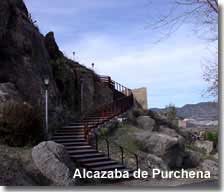
Purchena Alcazaba
The ruins of an ancient Arab fortress, strategically located on a hilltop plateau overlooking the valley and the town of Purchena, offers perhaps one of the most interesting examples of Moorish history.
The Alcazaba, which dates back as far as the 10th century, has been utilised throughout the ages for defence purposes by the rulers of the region, archaeological remains such as currencies, metals and pieces of ceramics have helped to date the different phases of occupation of the citadel.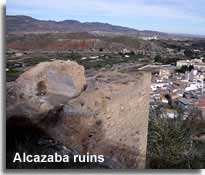
It was during the medieval period that the stronghold reached its greatest development, especially during the resistance period when the Nazari empire had to oppose the advances of the Christian 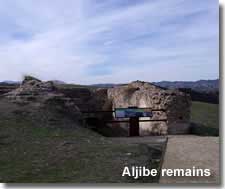 armies during the 14th and 15th centuries.
armies during the 14th and 15th centuries.
A fundamental key to the effectiveness of a walled defence system was the ability to collect and store water, a vital element in the event of a long siege. The ancient Arabic water storage tanks, known as aljibes, are today still evident on the plateau within the castle boundaries. The more recent Torre del Agua water tower, dated from the 16th century, was also  indispensable in the supply of water to the citadel, it protected a natural water spring and rain reservoir that served to supply the town population as well as the castle enclosure.
indispensable in the supply of water to the citadel, it protected a natural water spring and rain reservoir that served to supply the town population as well as the castle enclosure.
The Christian conquest of the region, by the Catholic Monarchs in the late 15th century, lead to a period of unrest in the valley and resulted in the inevitable uprising of the Moors in 1569, known as the Moorish Rebellion. In the Almanzora the Arab rebels took control of the valley between Seron and Zurgena with the Purchena fortress at the central point. 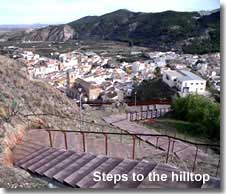 The recapture of Purchenas citadel, by the Christian forces, was a significant historic event in the bloody wars of the Almanzora, the Moorish rebellion had fallen, shortly followed by a similar outcome in the Alpujarras and the eventual expulsion of the Moors from Spain.
The recapture of Purchenas citadel, by the Christian forces, was a significant historic event in the bloody wars of the Almanzora, the Moorish rebellion had fallen, shortly followed by a similar outcome in the Alpujarras and the eventual expulsion of the Moors from Spain.
Access to the hilltop plateau, now recognised by the statue of Jesus Christ whose arms outstretch towards the town, and the remains of the Alcazaba foundations can be achieved via a series of 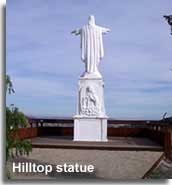 steps which can be reached either through the village or via signposted access from the AL-8412 on the outskirts of Purchena.
steps which can be reached either through the village or via signposted access from the AL-8412 on the outskirts of Purchena.
The Alcazaba represents an amazing piece of history, which is detailed on several factual placards at the site, in both Spanish and English, and includes the importance of the castle, and its place in the valleys ancient past. 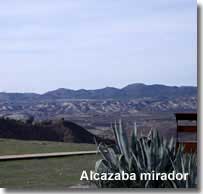
Aside from its historical consequence the hilltop position provides an elevated observation point with magnificent views over Purchena and the Almanzora Valley. The ruins of the Atalaya de Purchena watchtower, situated on an incline across the valley, can easily be spotted from the fortress grounds.  The watchtowers were also crucial in the defence of the valley, holding pivotal positions throughout the region, they made use of a complex warning system to which the Atalaya de Purchena played a considerable role.
The watchtowers were also crucial in the defence of the valley, holding pivotal positions throughout the region, they made use of a complex warning system to which the Atalaya de Purchena played a considerable role.
The plateau is also home to the Ermita Virgen del Carmen Christian chapel, named after the patrona of Purchena, the ermita was recently restored during the year 2002.
It is worth noting that there are no barriers around the edge of the plateau.
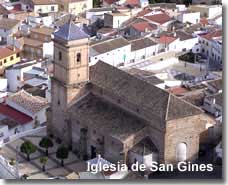
...while in Purchena...
The Iglesia de San Gines church cannot be missed, there are excellent aerial views from the Alcazaba. Located in the site of the old Moslem mosque, it dates back to the 16th century and contains three 18th century chapels. Its style is renaissance with Arabic influences and its restoration was finalised in 1991 after it was declared an historical landmark a few years earlier.
The Renaissance and Neoclassical epochs  left numerous religious buildings, many of the new Christian constructions replacing the mosques from the Arab reign.
left numerous religious buildings, many of the new Christian constructions replacing the mosques from the Arab reign.
There are many beautiful examples of chapels and churches in the villages and towns of the Almanzora, some of the 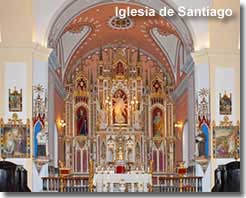 most notable include the 19th century churches of Iglesia Parroquial Nuestra Señora del Carmen in Cantoria and Iglesia de Santiago in Arboleas, as well as the 16th century Igelsia de San Ramon Nonato in Zurgena, named in honour of the patron of Zurgena.
most notable include the 19th century churches of Iglesia Parroquial Nuestra Señora del Carmen in Cantoria and Iglesia de Santiago in Arboleas, as well as the 16th century Igelsia de San Ramon Nonato in Zurgena, named in honour of the patron of Zurgena.
In Tijola, 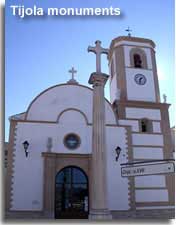 the 17th century parish church, Iglesia Parroquial de Santa Maria and the 16th century chapel Ermita Sanctuario de la Virgen del Socorro, named after the patrona of Tijola, exist side by side, with the La Cruz Blanca monument, the white cross of Tijola directly opposite.
the 17th century parish church, Iglesia Parroquial de Santa Maria and the 16th century chapel Ermita Sanctuario de la Virgen del Socorro, named after the patrona of Tijola, exist side by side, with the La Cruz Blanca monument, the white cross of Tijola directly opposite.
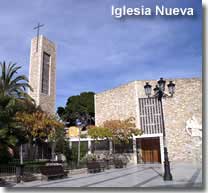
In Olula del Rio there are three contrasting religious buildings, the Iglesia de San Sebastian, a 16th century traditional neoclassical church, the 18th century Igelsia Nueva, a modern styled building with a distinct appearance and tower, the gardens of which have been turned into a play area for children, and a 20th century chapel which has been completely decorated in marble to reflect the marble mining heritage of the town.
In the subsequent era the Almanzora became a part of the industrial revolution, transforming the landscapes yet again, 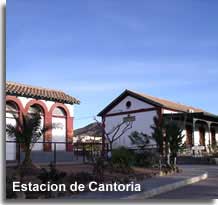 the developing mining industry and railroad constructions became the most important economic factors of the region. From ancient times up to present day, the areas mining history is considered one of the most important.
the developing mining industry and railroad constructions became the most important economic factors of the region. From ancient times up to present day, the areas mining history is considered one of the most important.
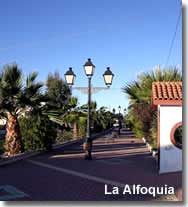
The now abandoned railways and stations were once a vital link in the transportation of minerals from the mines of the Almanzora. The main route, an invaluable asset in its time, followed the general path of the Rio Almanzora, passing through the whole of the valley and uniting Murcia province with Granada. The railway stations, or estacions ferrocarril in Spanish, are still evident today in many of the villages, though in different states of repair. The station of La Alfoquia near Zurgena, which saw its last use in 1984, has since been renovated to its original structure and enhanced with pretty walkways, 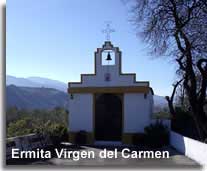 and the station in Cantoria has also seen renovations of a similar nature. The centrally situated Tijola station ended its important life in the mid 1980s, though a little neglected now, it can be visited on the outskirts of the town, along the road to Lucar and close to the Ermita Virgen del Carmen. This chapel, also known as Ermita de la Estacion, was built in honour of the Virgen del Carmen, the patrona of the district
and the station in Cantoria has also seen renovations of a similar nature. The centrally situated Tijola station ended its important life in the mid 1980s, though a little neglected now, it can be visited on the outskirts of the town, along the road to Lucar and close to the Ermita Virgen del Carmen. This chapel, also known as Ermita de la Estacion, was built in honour of the Virgen del Carmen, the patrona of the district
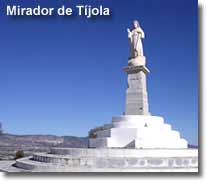 between Tijola and Lucar where the old station is situated.
between Tijola and Lucar where the old station is situated.
...also in Tijola...
In Tijola itself, the Mirador del Sagrado Corazon and statue is located in a prominent position to offer exceptional valley vistas. 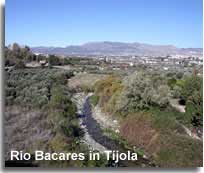
The surrounding countryside provides seductive scenery for walking and hiking, including the Bacares river and especially the mountainous terrain between Tijola and Bayarque, where the beauty spots of Paraje la Cerra and Tijola la Vieja are situated. Pinpointed on an informational placard along the main road in the town, these rugged landscapes offer evidence of prehistoric cave settlements, and the more recent, relatively speaking, remains of an Arab fortification, along with natural occurrences such as the Fuente del Huevo waterfall.
The Neolithic archaeological finding of the Idolo de Tijola, a soapstone 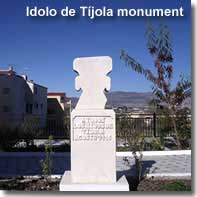 idol measuring approximately 15cm by 4.5cm, discovered in the La Muela del Ajo in the Paraje de los Blanquizares offers firm evidence that human presence in the area dates back to the Stone Age. A replication of the idol, much larger than the original, is proudly presented in statue form on the main road through the town serving as a reminder to the ancestry of Tijola.
idol measuring approximately 15cm by 4.5cm, discovered in the La Muela del Ajo in the Paraje de los Blanquizares offers firm evidence that human presence in the area dates back to the Stone Age. A replication of the idol, much larger than the original, is proudly presented in statue form on the main road through the town serving as a reminder to the ancestry of Tijola.
Environmental Heritage
Minerals and Mining
The importance of the mining history in the region is better understood on visiting the abandoned hamlet 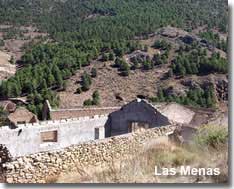 of Las Menas de Seron, the reasonably preserved ruins of the village were once, between the late 19th century and early 20th century, one of the main business and economic centres of the region, the iron deposits and exploitations creating demographic development until such times that the mines became exhausted.
of Las Menas de Seron, the reasonably preserved ruins of the village were once, between the late 19th century and early 20th century, one of the main business and economic centres of the region, the iron deposits and exploitations creating demographic development until such times that the mines became exhausted.
Access to Las Menas, in the hills of the Filabres, can be accomplished via the A-339 from Seron.
Las Menas features in the Sierra de los Filabres ![]()
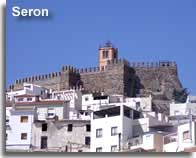
...while in Seron....
The municipality of Seron covers a relatively large area and includes many smaller districts, including Las Menas. Seron village itself is recognised by its 13th century hilltop castle surrounded by 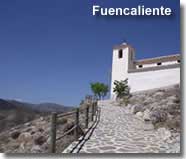 whitewashed houses, it sits on a hillside at around 800m above sea level in the Filabres foothills close to the Almanzora river.
whitewashed houses, it sits on a hillside at around 800m above sea level in the Filabres foothills close to the Almanzora river.
Fuencaliente, another step back in time in the district of Seron, is not without its own historical landmarks which are appreciable along the Via Verde walking trail of Seron.
Fuencaliente features in the walking trails of the Almanzora ![]()
In the Estancias mountains, particularly around Lucar and Somontin, 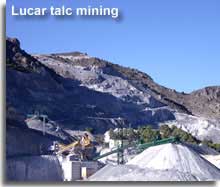 the extraction of Talc has been an influential economic ingredient, besides farming, for the livelihoods of the villagers over the past one hundred years, an industry which is still continuing today.
the extraction of Talc has been an influential economic ingredient, besides farming, for the livelihoods of the villagers over the past one hundred years, an industry which is still continuing today.
Lucar and Somontin villages feature in the Sierra de las Estancias ![]()
However it is the extractions from the Filabres that hold the highest significance in the region, the local marble exploitations make the Valle de Almanzora one of the most valued 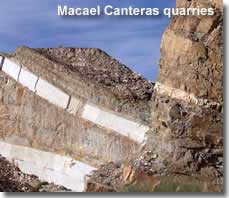 producers in the worldwide market.
producers in the worldwide market.
The marble zone includes the towns and villages of Cantoria, Albanchez, Lijar, Cobdar, Chercos, Macael and Olula del Rio.
The natural stone extraction process can easily be seen in the Almanzora quarries, particularly those of the Canteras in the hills above the town of Macael, the area is accessed along the main A-349. The Mirador de Canteras, signposted from the main road along an unmade track, offers panoramic views  from the Macael peaks, which include the extensive marble quarries, striking vistas of the valley below and far reaching mountainscapes of the Estancias in the distance.
from the Macael peaks, which include the extensive marble quarries, striking vistas of the valley below and far reaching mountainscapes of the Estancias in the distance.
The impressive visual impact that the marble extractions have made on the 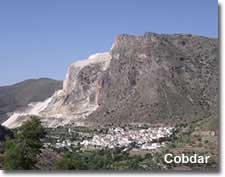 landscapes in the Almanzora can also be appreciated at the quarries of Lobera in Lijar and great quarry of Calares in Cobdar.
landscapes in the Almanzora can also be appreciated at the quarries of Lobera in Lijar and great quarry of Calares in Cobdar.
...while in the marble zone....
Cobdar is worth a visit for its spectacular location alone, settled at the foot of the enormous rock for which its white marble is famous.
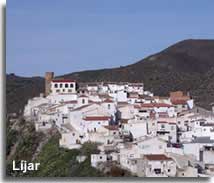
Lijar village is nestled on a hillside above the banks of the Rio Lijar, surrounded by astounding countryside, it is located along the ALP-735. The road itself offers access to 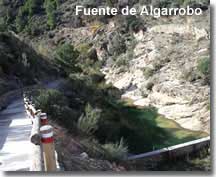 several signposted walking routes which cross the valleys and mountains throughout the municipality and its outlying terrain. One such trail incorporates the beauty spot of the Fuente de Algarrobo, a natural water source that forms a picturesque bottle green pond hidden at the foot of a rocky gorge. A further route, Camino de las Canteras, also indicated from the main road, links Lijar to the Canteras of Macael.
several signposted walking routes which cross the valleys and mountains throughout the municipality and its outlying terrain. One such trail incorporates the beauty spot of the Fuente de Algarrobo, a natural water source that forms a picturesque bottle green pond hidden at the foot of a rocky gorge. A further route, Camino de las Canteras, also indicated from the main road, links Lijar to the Canteras of Macael.
The pueblo of Lijar is recognised by the modern castle at its head, 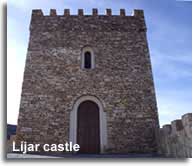 it was constructed in the year 2005 to assist in the promotion of tourism for the area and makes for an effective point of entrance to the village. At the foot of the village there is an splendid example of a traditional public
it was constructed in the year 2005 to assist in the promotion of tourism for the area and makes for an effective point of entrance to the village. At the foot of the village there is an splendid example of a traditional public  laundry, which has been fully restored as a cultural attraction.
laundry, which has been fully restored as a cultural attraction.
The parish church, dates back to the 17th century, and a further small chapel, Ermita de Fatima, is located by the roadside within the village vicinity.
Lijar is one of those destinations that 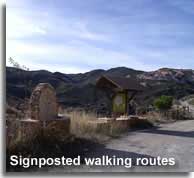 you don't tend to pass through on the way to somewhere, you have to make a point to actually travel there, and it is worth making that point. For those who enjoy the countryside, and plenty of peace and tranquillity, it makes a lovely day trip destination. For the explorer there are placards by the side of the road which map out the walking trails. The main road itself is in excellent condition with plenty of road side barriers and no steep inclines to speak of.
you don't tend to pass through on the way to somewhere, you have to make a point to actually travel there, and it is worth making that point. For those who enjoy the countryside, and plenty of peace and tranquillity, it makes a lovely day trip destination. For the explorer there are placards by the side of the road which map out the walking trails. The main road itself is in excellent condition with plenty of road side barriers and no steep inclines to speak of.
Macael town has a large industrial zone due to it marble mining activity, though it does still offer one or two meaningful monuments.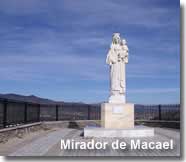 The Mirador Virgen del Rosario offers a raised viewing point with vistas in every direction, access is via a series of steps and walkways, and besides the views the climb is rewarded by the form of the Virgen de Rosario statue, sculpted from the purest white marble from the Macael mountains.
The Mirador Virgen del Rosario offers a raised viewing point with vistas in every direction, access is via a series of steps and walkways, and besides the views the climb is rewarded by the form of the Virgen de Rosario statue, sculpted from the purest white marble from the Macael mountains. 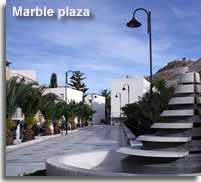 The entry point to the Mirador is located just passed the Civil Guardia offices at the forefront of the town.
The entry point to the Mirador is located just passed the Civil Guardia offices at the forefront of the town.
A further monument to the heritage of Macael is the Monumento al Cantero, a marble sculpture dedicated to the work of the stone cutter, it situated in the town centre next to a marble plaza and fountain, the garden area of which is embellished with small marble statues. The recurring theme of course being the locally produced marble for which Macael is naturally quite proud. 
Cantoria, located along the AL-8311, stands of a fertile plain in the lower valley and relies on the production of marble as well as agriculture for its economy. The glorious parish church in the village centre and the restored 16th century chapel, Ermita 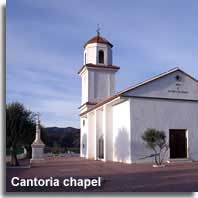 San Cayeta and Anton, in elevated position overlooking the village, are both worthy of a visit, the grounds of the Ermita presents some superior village and countryside views.
San Cayeta and Anton, in elevated position overlooking the village, are both worthy of a visit, the grounds of the Ermita presents some superior village and countryside views.
The Torre Vigia La Torreta Hojilla watchtower, now mostly in ruins, contributes to the Moorish history of the valley, the tower remains can still be spotted from the main A-334 just before the junction for Cantoria and can be reached by a unpaved track. 
Agriculture
Throughout the ages agriculture has been the base for the sustenance of the villagers of the Almanzora, mainly by subsistence farming, providing food for themselves and their families.
The farming villages and hamlets, now linked by a network of roadways, offer the visitor a sense of tradition that has been around for centuries as well as some breathtaking rural scenery. 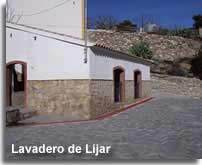
Water
Water is the basic resource around which the activities of mankind have always revolved in the Almanzora, as with many other areas in the province of Almeria, the availability of this principal element has determined the existence and development of the 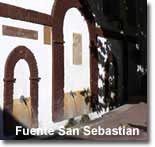 Almanzora villages. Naturally the valley rivers and mountain springs have been the most influential assets, many examples of their utilisation can be seen in the Almanzora, including the public laundries such as those in Armuña and Lijar, the San Sebastian fountain in Somontin, and the Cela spring, between Tijola and Lucar.
Almanzora villages. Naturally the valley rivers and mountain springs have been the most influential assets, many examples of their utilisation can be seen in the Almanzora, including the public laundries such as those in Armuña and Lijar, the San Sebastian fountain in Somontin, and the Cela spring, between Tijola and Lucar. 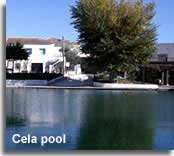 The spring waters of Cela are thermal and today the water is presented as a modern bathing area, with access to the pool being free of charge.
The spring waters of Cela are thermal and today the water is presented as a modern bathing area, with access to the pool being free of charge.
The Cela pool features in the Sierra de las Estancias ![]()
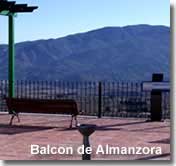 ...also in Somontin...
...also in Somontin...
The Balcon de Almanzora Mirador is a prime observation point for the Almanzora, offering one of the most far reaching views of the valley and including vistas of the Sierra de los Filabres mountain range from a vantage point on the edge of Somontin pueblo in the Estancias mountains.
Somontin pueblo features in the Sierra de las Estancias ![]()

Air
The air in the region is among the cleanest in Europe due to the absence of contaminating industries, the result is an exceptional quality of sky which has been protected in this area to allow the preservation of its natural circumstances for astronomical observations. Taking advantage of these conditions the Calar Alto Observatory, one of the worlds most important investigations centres, is situated on the highest peak of the Filabres range, at over 2000m above sea level on the southern border of the Almanzora.
Local Culture
Gastronomy
The gastronomy of the Almanzora is from the basic ingredients of a typical Andalucian kitchen,  vegetables, wheat and rice. Meat is usually pork or rabbit, and of course olive oil is an essential fundamental, often used in conjunction with garlic and spices to create delicious and healthy offerings. It is customary to take time over a meal, enjoying it to the full, an occasion usually completed with a glass or two of local wine.
vegetables, wheat and rice. Meat is usually pork or rabbit, and of course olive oil is an essential fundamental, often used in conjunction with garlic and spices to create delicious and healthy offerings. It is customary to take time over a meal, enjoying it to the full, an occasion usually completed with a glass or two of local wine.
Typical dishes included migas cortijeras, primarily made from 'peasant' bread fried in garlic and olive oil, a popular winter dish in the village of Armuña where paprika and fried dry tomatoes are added. Or gachas saladas, a simple salted porridge, and frita de conejo a delicacy of fried rabbit, which in Sufli is fried with pepper and tomato. Olla de trigo, a pot stew, has optional ingredients,  around the areas of Albox and Zurgena this stew is often made from onion and turnip and served with pigs liver.
around the areas of Albox and Zurgena this stew is often made from onion and turnip and served with pigs liver.
Jamon Serrano, a dry cured ham served in wafer thin slices, is a characteristic delicacy of the region, clean and clear air are contributing conditions for the curing of the ham, and the village of Seron receives international prestige for its excellent product along with local acclaim within Andalucia.
Olive oil, the base of the Mediterranean diet, is produced and bottled in some of the towns and villages of the Almanzora such as Albox, Arboleas, Tijola, Seron and Urracal.
As for desserts, traditional menus include roscos - sweet doughnuts, los mantecados de miel - honey and ice cream, el cuajao de almendras - almond cake, or el pan de higos - fig bread. Last but by no means least, leche frita, translated as fried milk, is a mouth watering recipe of milk, flour, sugar, and eggs made into a thick custard then deep fried in olive oil.
Arts and Crafts
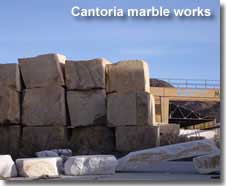 Craft work in the Almanzora prompts a great interest, the most prominent being the works of art from the flourishing marble industry, said to be demonstrated in monuments as notable as the Alhambra of Granada, the Great Mosque of Cordoba and the El Escorial Monastery of Madrid, as well as local monuments such as the marble column in Cantoria. The villages and towns in the marble zone
Craft work in the Almanzora prompts a great interest, the most prominent being the works of art from the flourishing marble industry, said to be demonstrated in monuments as notable as the Alhambra of Granada, the Great Mosque of Cordoba and the El Escorial Monastery of Madrid, as well as local monuments such as the marble column in Cantoria. The villages and towns in the marble zone 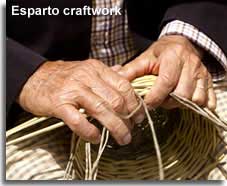 form the centre of the marble craft network with their factories and marble workshops.
form the centre of the marble craft network with their factories and marble workshops.
Tijola, Seron and Albox single out another type of craft, traditional ceramics and pottery, and Urracal is noted for its luxury natural stone mosaics.
Work with esparto has a long history in the region, the village of Seron, whose name aptly translates to mean basket, is the centre for the craft, and naturally esparto baskets are a tempting object of interest along with many other natural items ideal for home decoration.
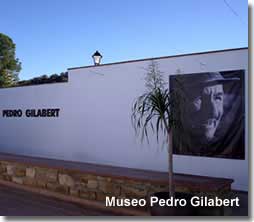
Museums
The museum of Pedro Gilabert in Arboleas
is dedicated to the work of the popular local artist whose self taught skills came to him later in life and offers a permanent exhibition of his wooden sculptures, his craftsmanship and style a source of inspiration and reference for artists and workshops.
Pedro Gilabert, was born in 1915 in the Huevanillas district of Arboleas in Almeria, the son of a peasant family whose livelihood was from agriculture and live stock breeding. At the age of 15 Pedro left  Arboleas in search of work, he spent time in Madrid and Gerona where he worked as a brick layer, and participated in the Spanish Civil War, during which he became a prisoner of war. In 1953 he emigrated to Argentina, where he worked for 7 years as a farmer, then he moved on to France where he found work once again as a brick layer. In 1962 he eventually returned to his home village of Arboleas at 63 years of age. Only then did he commence his sculpting, by means of simple do it yourself tools, using olive wood in the main for his art.
Arboleas in search of work, he spent time in Madrid and Gerona where he worked as a brick layer, and participated in the Spanish Civil War, during which he became a prisoner of war. In 1953 he emigrated to Argentina, where he worked for 7 years as a farmer, then he moved on to France where he found work once again as a brick layer. In 1962 he eventually returned to his home village of Arboleas at 63 years of age. Only then did he commence his sculpting, by means of simple do it yourself tools, using olive wood in the main for his art.  His wooden sculptures have received much recognition and can be seen in the Arboleas museum along with information on his life and art work. Pedro Gilabert died at the ripe old age of 92 in his home town of Arboleas where he is fondly remembered.
His wooden sculptures have received much recognition and can be seen in the Arboleas museum along with information on his life and art work. Pedro Gilabert died at the ripe old age of 92 in his home town of Arboleas where he is fondly remembered.
Opening Hours Museo Pedro Gilabert
Tuesday to Sunday
10am - 2pm
(Closed Mondays)
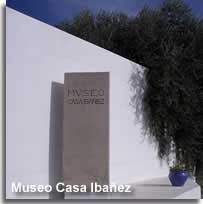
The Museo Casa Ibañez in Olula del Rio
is undoubtedly one of the the most important art museums in Almeria and home to some of the impressive paintings of locally born artist Andres Garcia Ibañezes.  Added to his prestigious collection are many other classic works including the photography of Carlos Perez Siquier, and sculptures, engravings and paintings by esteemed artists such as Goya, Picasso, Madrazo, Parra and Sorolla.
Added to his prestigious collection are many other classic works including the photography of Carlos Perez Siquier, and sculptures, engravings and paintings by esteemed artists such as Goya, Picasso, Madrazo, Parra and Sorolla.
The Museum is located just outside of the town, next to the main A-334 and is signposted from Olula town centre. 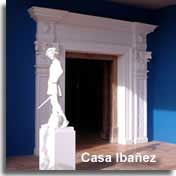
Opening Hours Casa Ibañez
Tuesday to Sunday
Oct - Mar : 11am - 2pm, 5pm - 7pm.
Apr - May : 11am - 2pm, 6pm - 8pm.
Jun - Sep : 11am - 2pm, 7pm - 9pm.
(Closed Mondays)
External link
Provided to help visitors make the most of the area. The link will open in a separate page.
Museo Casa Ibañez website, in English, with further information on the artist, the importance of his works, and general gallery information.
Fiestas
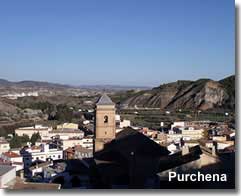 Each and every main village of the Valle de Almanzora holds at least one fiesta a year, some villages will host several, they are momentous occasions offering cultural traditions, local gastronomy and fabulous entertainment.
Each and every main village of the Valle de Almanzora holds at least one fiesta a year, some villages will host several, they are momentous occasions offering cultural traditions, local gastronomy and fabulous entertainment.
One of the most notable, in the village of Purchena, is the Juegos Moriscos de Aben Humeya, celebrated towards the end of July. The Moorish games revive old customs in the reenactment of historical Arabic sporting events and the fiesta has been declared a national tourism interest. Besides the games there is a wide representation of cultural music and dance, an Arabic craft market in the village streets and the opportunity to sample some Moroccan cuisine.
I am told this is one of the best fiestas in the region, and quite possibly in the whole of the province, an event on my wish list.
Serons ham festival, a prestigious event for the local industry, held on the first weekend in July, is also of marked interest, visitors have the opportunity to taste the renowned serrano ham and sample some of the local wines.
Flora & Fauna
The Almanzora valley,  defined on either side by the rugged landscapes of the two mountain ranges, is an area of immense beauty, extraordinary scenery and unusual contrasts.
defined on either side by the rugged landscapes of the two mountain ranges, is an area of immense beauty, extraordinary scenery and unusual contrasts.
The flora of the Valle de Almanzora is as diverse as its terrain, for tourism in nature the region invites many enthusiastic travellers, and of certain interest there are several indigenous species. 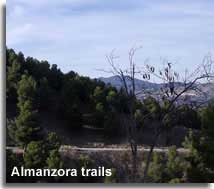
An area of great attraction for anyone who enjoys the observation of wildlife in it natural habitat, the fauna of this region includes examples of fox, wild boar, deer, badger and wildcat among others. On a transit zone for migratory birds, the numbers and variety of species is exemplary.
For nature lovers it is a pleasure to follow the multitude of pathways and nature trails that cross the Almanzora, enjoying the clean air and sensational landscapes. 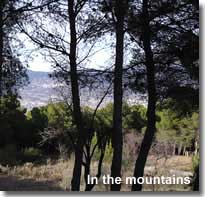
Into the Mountains
The Valle de Almanzora, as mentioned, does included the many villages of the Sierra de las Estancias and of the Sierra de los Filabres within it boundary limits, the mountains therefore are hard to ignore, and in fact offer the best natural miradors to the valley below.
Area Recreativo La Silveria
The La Silveria recreational area is situated in the Sierra de los Filabres, nine kilometres from Purchena, in an uphill direction. 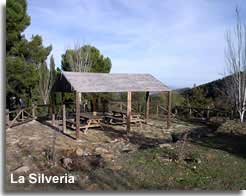 This mountain trail is all about the scenery, and the views, which are absolutely fabulous. The destination offers a serene setting way above the valley and a place to relax and unwind, several wooden tables and benches are provided, shaded by the surrounding woodland pine trees, making for an imaginative picnic spot. La Silveria is signposted from the AL-8412 just outside of Purchena village.
This mountain trail is all about the scenery, and the views, which are absolutely fabulous. The destination offers a serene setting way above the valley and a place to relax and unwind, several wooden tables and benches are provided, shaded by the surrounding woodland pine trees, making for an imaginative picnic spot. La Silveria is signposted from the AL-8412 just outside of Purchena village.
Now I thought in covering a valley destination I had left behind the suspenseful mountain trails, but no, here I go again! 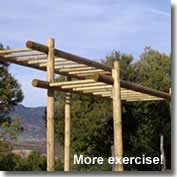 I simply cannot resist the lure of the mountains calling to me. My anxiety of heights will never be conquered but I do believe that my mountain trips have made me a little less fearsome.
I simply cannot resist the lure of the mountains calling to me. My anxiety of heights will never be conquered but I do believe that my mountain trips have made me a little less fearsome.
This route can be either taken by vehicle or on foot.
I have to mention the exercise frames, situated within the first kilometre of the trail by the side of the road, these wooden constructions are purposely made for several different muscle groups and include monkey swings and sit up benches, 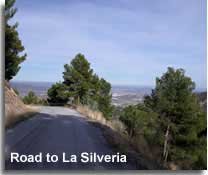 as if walking uphill for 9km wasn't enough exercise! Actually I confess I drove to La Silveria, all in the name of research of course, I had to test the road worthiness of the trail. The narrow road, with limited roadside barriers, was of paved tarmac but very worn and full of potholes, and after the first 4km, as the climb became higher,
as if walking uphill for 9km wasn't enough exercise! Actually I confess I drove to La Silveria, all in the name of research of course, I had to test the road worthiness of the trail. The narrow road, with limited roadside barriers, was of paved tarmac but very worn and full of potholes, and after the first 4km, as the climb became higher, 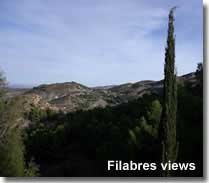 its quality deteriorated, especially on the parts furthest away from the mountains edge, how surprising. The ascent was quite gradual, which was nice, with very few steep sections, even nicer, and its circling of the mountainsides only served to enhance the views, which, I have to reiterate, are quite wondrous.
its quality deteriorated, especially on the parts furthest away from the mountains edge, how surprising. The ascent was quite gradual, which was nice, with very few steep sections, even nicer, and its circling of the mountainsides only served to enhance the views, which, I have to reiterate, are quite wondrous.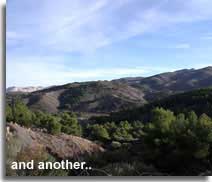 The route does continue passed the recreational area, though the road destination is not indicated, for me, I had gone high enough for one day.
The route does continue passed the recreational area, though the road destination is not indicated, for me, I had gone high enough for one day.
In the lower sections of the road there were a couple of signposted walking trails heading off into the forest, options for further exploring.
I took this day trip early in the month of December, and there was a nip in the mountain air, but all in all, it was another gorgeous sunny day in Spain. 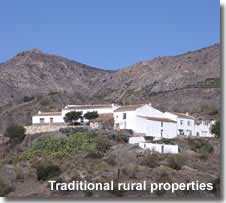
Almanzora Property
Rural property in Almeria
Not surprisingly, old cortijos and rustic farmhouses are much sought after properties in the Almanzora, particularly for those seeking a more countrified lifestyle in the sunshine, the wide open spaces ensuring plenty of choice for rural retreats in away from it all destinations. The region is also favoured with property buyers who are looking for a traditional Spanish village setting, Albox, Arboleas and Zurgena remain high in popularity in the valley, being close to the main road network and an easy forty minute drive to the coast.
Choose Almeria property listings for the Valle de Almanzora
Zurgena lies in the lower basin of the Rio Almanzora and relies mainly on agriculture and tourism 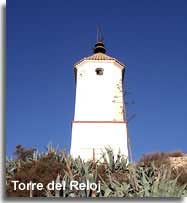 for its economy, the river bed divides the old hilltop village from its neighbouring counterpart La Alfoquia.
for its economy, the river bed divides the old hilltop village from its neighbouring counterpart La Alfoquia.
The best views of both pueblos can be seen from the Zurgena mirador, Torre del Reloj, a clock tower built on the highest hilltop of Zurgena village which is signposted from the plaza. 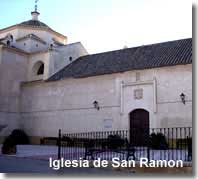 The short, steep, yet atmospheric walk up to the viewing point, winds it way through the whitewashed houses and passes the stunning Mudejar style Iglesia de San Ramon parish church.
The short, steep, yet atmospheric walk up to the viewing point, winds it way through the whitewashed houses and passes the stunning Mudejar style Iglesia de San Ramon parish church.
The municipality of Albox, one of the largest in the valley, has a rich agricultural heritage owing to its proximity to the valley river network.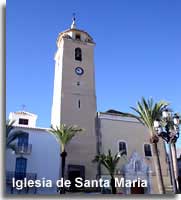 Today Albox town has an air of wealth and prosperity, it has been a area of local commerce since the 19th century, though prior to that the area suffered through many struggles, including an earthquake in the early 16th century.There is a good selection of British businesses and services in Albox along with an established expat community.
Today Albox town has an air of wealth and prosperity, it has been a area of local commerce since the 19th century, though prior to that the area suffered through many struggles, including an earthquake in the early 16th century.There is a good selection of British businesses and services in Albox along with an established expat community.
The historical monuments of Albox include the Igelsia Parroquial de Santa Maria, the parish 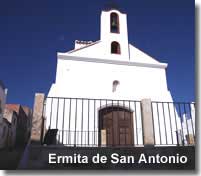 church, which dates back to the early 18th Century, and the Ermita San Antonio, located in the Barrio Alto area of Albox, an 18th century chapel said to be built on the site of an Arab mosque. The Ermita is situated in a raised position close to the Plaza San Antonio, and the San Antonio fiesta, in honour of the patron of the Barrio Alto of the town, is celebrated early to mid June in this location.
church, which dates back to the early 18th Century, and the Ermita San Antonio, located in the Barrio Alto area of Albox, an 18th century chapel said to be built on the site of an Arab mosque. The Ermita is situated in a raised position close to the Plaza San Antonio, and the San Antonio fiesta, in honour of the patron of the Barrio Alto of the town, is celebrated early to mid June in this location.
Albox offers access to the Santuario del Saliente mountain retreat high up in the Estancias 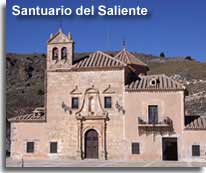 mountains, which is singposted from the town.
mountains, which is singposted from the town.
El Santuario features in the Sierra de las Estancias ![]()
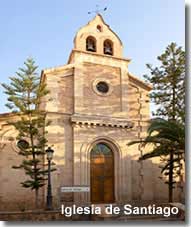 Arboleas lies further up the valley, in the foothills of the Sierra de los Filabres mountains, the village has expanded with an influx of foreign visitors, though still retains its traditional charms. Located directly from the A-334 across the Almanzora river rambla via an overpass,
Arboleas lies further up the valley, in the foothills of the Sierra de los Filabres mountains, the village has expanded with an influx of foreign visitors, though still retains its traditional charms. Located directly from the A-334 across the Almanzora river rambla via an overpass, 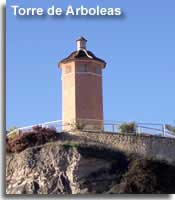 the whitewashed village has a strong agricultural economy growing citrus, almond and olive trees which enhance the beauty of the countryside and reflect the typical landscapes of the valley. Besides the eclectic style church the most notable and prominent monument is the Torre de Arboleas, in a hilltop position overlooking the village, it was built by the Moslems, reformed by the Christians in the 15th century and has recently been restored.
the whitewashed village has a strong agricultural economy growing citrus, almond and olive trees which enhance the beauty of the countryside and reflect the typical landscapes of the valley. Besides the eclectic style church the most notable and prominent monument is the Torre de Arboleas, in a hilltop position overlooking the village, it was built by the Moslems, reformed by the Christians in the 15th century and has recently been restored.
The Los Llanos weekend open air market is the latest addition to the area, situated between Arboleas and Albox, many of its stalls are flourished with British goods.
Property in the Almanzora is excellent value for money compared to similar homes on the coast. Farm houses and cortijos, for renovation or fully reformed, represent a large market share making the dream of a hideaway in the beautiful Spanish countryside a reality.
Villages of the Almanzora Valley
To do full justice to each of the villages of the Almanzora they will be detailed separately in a dedicated page for each.
Visiting each and every village in the whole of Almeria province is my next mission, a huge task, but step by step I will include new destinations to the website and include links to the Almanzora villages from this page.







